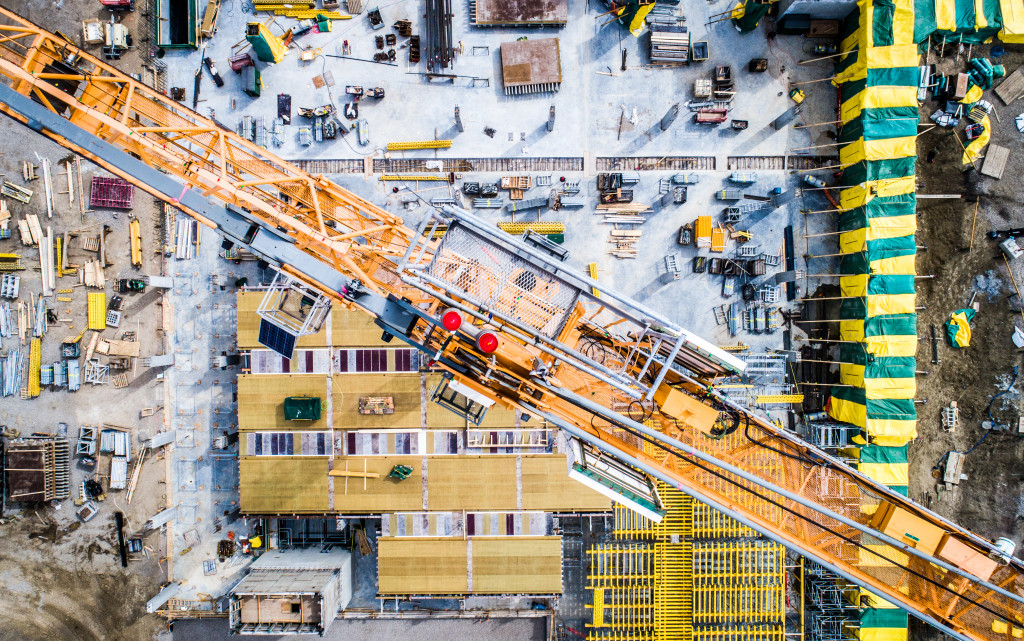- Workstation cranes lift and move heavy objects, reducing manual labor and allowing for complex maneuvers with great accuracy.
- Automated tools such as robotic arms can mimic human arm movements and take up the heavier burdens of construction projects.
- Augmented reality technology lets users overlay digital information onto the real world to make complex tasks manageable.
- 3D printing has revolutionized the fabrication of components, reducing costs while increasing quality and accuracy.
In the construction industry, innovative equipment is increasingly necessary for making work more accessible and efficient. From specialized tools to advanced robotics, new technologies are revolutionizing how construction projects are completed. With these advancements come improved safety features that reduce the risk of injury on job sites and increased precision for complex tasks requiring accuracy.
In addition, automated processes can help speed up completion times while reducing labor costs and improving efficiency. This article will explore some of the most cutting-edge equipment used in modern construction projects and discuss their potential benefits for workers and clients.
Workstation cranes
Durable workstation cranes are a valuable piece of innovative equipment in the building industry. They help lift and move heavy items, thus making the construction process more manageable. The framework of the crane is encased by reinforced steel beams, allowing incredible sturdiness for carrying even up to two metric tonnes in some cases.
Workstation cranes enable personnel to execute maneuvers that could typically be considered entirely out of reach – from keeping heavy materials suspended over great heights to elevating them up several stories within minutes. All in all, workstation cranes make tricky construction work much more straightforward and safer.
Automated tools
Here are some of the automated tools relevant to construction:
Robotic arms

Robotic arms constitute a significant advancement in the construction industry, enabling faster and safer processes previously too complex or cumbersome to execute. In essence, robotic arms can mimic human arm movements and take up the heavier burdens of construction projects with high accuracy and precision.
Their modular nature makes it easy to relocate them from one task to another depending on the demand, ensuring they are both cost-efficient and reliable. Moreover, because of their range of motion capabilities, robotic arms enable construction workers to save time by getting projects done more quickly—including automated welding operations such as pipe welding and fabrication.
Augmented reality technology
Augmented reality is fast becoming an essential tool for construction workers across the globe. This innovative technology allows users to overlay digital information in the real world, making complex construction tasks more manageable.
AR can be used for various purposes, from planning and design to on-site guidance and training. This makes it an incredibly versatile tool that can save time and money on construction projects of all sizes.
3D printing
3D printing is an innovative form of equipment that has revolutionized the construction industry. This technology, also known as additive manufacturing, allows builders to create 3-dimensional models and components from digital files with great accuracy and precision. It is used in various contexts – from engineering projects, where it is used to test designs, to an architecture that enables the fabrication of complex components.
Because of its significant contribution to the construction process, 3D printing can help reduce costs while increasing quality and accuracy while decreasing the time it takes to fabricate parts. This makes it ideal for individual projects and small businesses that rely on speed and efficiency in their construction operations. Moreover, 3D printing results in less waste and a greater level of sustainability for building components that use fewer resources than traditional methods.
Automated drones

Automated drones are seen as innovative equipment that makes construction work more manageable. Essentially automated drones are unmanned aerial vehicles programmed to create high-resolution visuals from above and can be utilized in various ways, including investigation and inspection of construction sites.
This revolutionary technology has allowed the ability to map out areas in great detail and provide valuable feedback for progress tracking and precision planning. Any conflicts or discrepancies in the result can then be adjusted quickly, predicting expensive delays or creating safety risks.
Automated drones have been proven effective in improving risk management, reducing costs, enhancing the workflow of projects, as well as providing real-time data with accuracy and precision on potential environmental risks that may need addressing during or before commencement.
Smart sensors and monitoring systems
Smart sensors and monitoring systems are advanced products that have revolutionized the construction industry, providing an important new tool to make work more straightforward and accessible.
These systems integrate various advanced technologies, such as GPS on construction machinery, digital registration of workers’ attendance, and RFID card tracking materials. This technology allows for speedy project execution and provides more accurate data.
It can help supervisors monitor operations more closely, measure productivity in real time, minimize human error, and detect potential risks more effectively. Event time-stamping also helps with area comparison efficiency and resource allotment optimization.
These are some of the most cutting-edge equipment used in modern construction projects today. These advancements include improved safety features, increased precision for complex tasks, automated processes to speed up completion times, and reduced labor costs.






